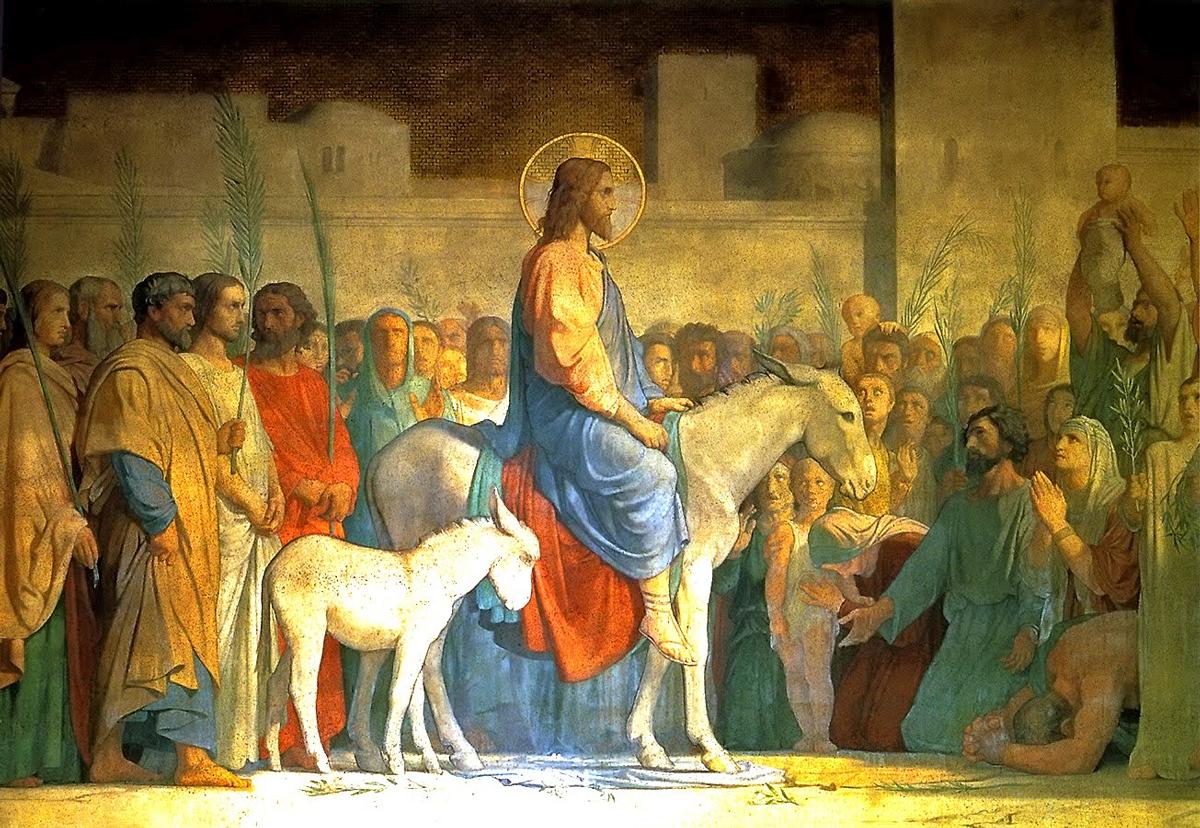April 13: Perspective on Moments and Eternity
♫ Music:
Palm Sunday, April 13—Day 40
And they threw their coats on the colt and put Jesus on it. As He was going, they were spreading their coats on the road. As soon as He was approaching, near the descent of the Mount of Olives, the whole crowd of the disciples began to praise God joyfully with a loud voice for all the miracles which they had seen, shouting:
“Blessed is the King who comes in the name of the Lord; Peace in heaven and glory in the highest!” Some of the Pharisees in the crowd said to Him, “Teacher, rebuke Your disciples.” But Jesus answered, “I tell you, if these become silent, the stones will cry out!”
Luke 19: 35-40
Perspective on Moments and Eternity
I remember very clearly the first time, as a child, that I visited a church that celebrated Palm Sunday by passing out palm leaves to the congregation. Now living in California, I realize that they may have been some other kind of plant, but then I was completely convinced that the leaf I held in my little hand was the same kind placed before Jesus centuries ago. I was mesmerized by the connection. Joy I could not express pervaded my being – Jesus was here and we had the opportunity to give him everything we had, symbolized by a leaf that was slightly frayed at its edges.
As grown ups, we so easily read the story of Jesus’ entrance into Jerusalem ironically. I, and perhaps you, have heard it noted countless times that “the same crowd that was shouting ‘Hosannah! Blessed is he who comes in the name of the Lord’ one day was shouting ‘Crucify him’ the next.” While that may be true, it makes one wonder, in that case, what was the point of having a triumphal entry at all?
In Hippolyte Flandrin’s painting Christ’s Entry into Jerusalem, the figure of Jesus immediately draws my eye, but does so by way of the donkey colt, the brightest spot on the canvas. The focused light shines so brightly that it even makes most of the colt’s features illegible. This erasure of an already lowly and “invisible” creature (it is a donkey, not a horse; a foal and not the mature donkey) occurs through literal highlighting and is given a central place. The image is one of humility on display, which is precisely what characterizes Jesus’ ride into Jerusalem.
Then I begin looking at the faces of the people in the crowd. Each face shows a different expression: wonder, fear, skepticism, confusion, worship. With a few exceptions of people looking away or looking down, the majority of the figures are looking up at Jesus’ face and his halo. They do not understand yet that Jesus’ radical humility is worthy of adoration. The ones on the ground seem closer to seeing the heart of Jesus, shown symbolically by their depiction in the same physical plane as the colt. However, every one of their expectations ultimately were violated.
Those moments in which we feel so close to Jesus, so certain of who he is and who we are to him, are invariably followed by times of disappointment brought about by not getting the job, a failed relationship, the death of a loved one. Not being able to know yet all of who Jesus is and the whole extent of his love for us does not make those glorious moments any less true. And Jesus himself does not reject our imperfect praise.
As in the song “Hosanna to the Son of David,” the trumpet calls of his presence can move us to the quieter confidence of his greatness, which we share with all believers regardless of our circumstances. We await Jesus’ final entrance when the two will be brought together.
Monica Cure, Assistant Professor, Torrey Honors Institute
Prayer
O gracious and holy Father,
give us wisdom to perceive you,
diligence to seek you,
patience to wait for you,
eyes to behold you,
a heart to meditate on you,
and a life to proclaim you;
through the power of the Spirit
of Jesus Christ our Lord.
Amen.
(St. Benedict c.480-547)
Christ’s Entry into Jerusalem
Jean-Hippolyte Flandrin
Church of Saint Germain des Pres, Paris, France
Fresco
About the Artist and Art
Jean-Hippolyte Flandrin (1809-1864) was a 19th-century French painter. The pupil of Jean Auguste Ingres in Paris, he won the Grand Prix de Rome in 1832 and spent five years in the Eternal City, one of his works of that period being the Christ Blessing the Little Children in the Lisieux Museum. He returned to France determined to revive religious art and his noblest works adorn the churches of Paris, among them those of Saint Severin, Saint Germain-des-Pres, and Saint Vincent-de-Paul. His most ambitious work, the decoration of the nave of Saint Germain-des-Pres was undertaken in 1856 and included this fresco of Christ’s entry into Jerusalem.
About the Music
Hosanna to the Son of David lyrics
Hosanna to the son of David
Hosanna to the son of David
Chorus:
Blessed is he that cometh in the name of the Lord
O king of Israel, O king of Israel,
Hosanna in the Highest
The Hebrews bearing olive branches,
Went forth their king in triumph,
(Chorus)
O Jesus Christ our Lord and Savior,
May we in homage join the singing:
(Chorus)
About the Performers
The Daughters of Mary Mother of Our Savior is a congregation of traditional Catholic Sisters, founded in the summer of 1984. The motherhouse, St. Joseph's Novitiate, is located in upstate New York. Here at St. Joseph's Novitiate candidates for the religious life, aspiring to become Daughters of Mary, receive their training and spiritual formation. The Sisters have produced many professionally recorded, beautiful albums including Gregorian hymns.
http://daughtersofmary.net/music.php
